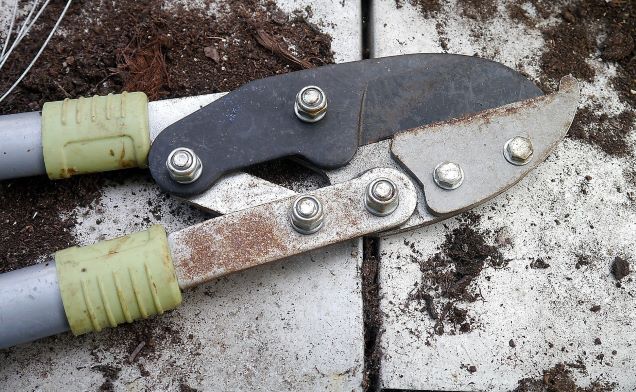Is your garden ready for winter?
How to winterize your yard and keep up with curb appeal
The change in seasons is upon us. As the temperature starts to drop, the plants in your yard are preparing for dormancy. While it may seem like all activity in the garden has stopped, there's still plenty of action happening beneath the soil until it freezes.
Newly transplanted trees and shrubs, divisions of perennials, and hardy bulbs are all growing roots and drawing strength from the soil nutrients and moisture around them. Even with all of this happening, your plants will need protection from the cold, frigid weather to make it through the winter.
Winterizing your garden will help the plants survive those short gray days and frosty nights, and ensure they produce hearty vegetables and colourful flowers in the spring. It will also reduce the amount of work facing you after the thaw.

Ways to put the garden to bed for the winter
Divide and plant bulbs
Three to four weeks after fall bulbs have finished blooming, it’s time to dig them up and divide any plants that were crowded or straggly during the growing season.
When it comes to spring bulbs, this might require a little guesswork to determine location. Dig 4-8 inches from the plant’s growing stalk and carefully loosen the soil. Lift bulbs gently and separate for immediate transplanting elsewhere in the garden.
If you already dug up your spring bulbs—like daffodils, tulips and crocuses—for dividing, it’s time to replant them for another year of display.
Harvest the compost
Using rich summer compost to top up garden beds and amend deficient soils will nourish the soil and jumpstart growth in the spring.
Loose the leaves
Be sure to rake up all the leaves so they don’t smother the grass. You could also mow the lawn and collect the mix of clippings and shredded leaves to use as mulch in the garden and flower beds.
Plant cover crops
Early fall is a good time to sow cover crops like rye, vetch or clover. These types of crops help prevent soil erosion, break up compacted areas, and increase the level of organic matter in garden beds. Cover crops also add nutrients.
Planting crops such as clover or field peas can increase the levels of available nitrogen for garden vegetables. Generally, cover crops should be planted approximately one month before the first killing frost. Keep in mind that some cover crops are hardier than others, so it’s best to identify which cover crops are best for your region.
Prepare the soil
Fall is a great season to dig in soil enhancements like manure, compost, bone meal, kelp, and rock phosphate. Adding nutrients at this time of year allows time for them to start breaking down, enrich your soil, and become biologically active.
Digging and turning the soil now, also means that you’ll have some of the work done before spring arrives.
Prune the perennials
Fall is a good time to trim perennial plants that benefit from pruning at this time of year. Some plants—like raspberry and blueberry—prefer a spring pruning that helps safeguard the plant from exposure to disease and stress.
Remove invasive weeds
It’s time to deal with all those renegades that encroach the border of your garden. Most invasive weeds remain viable in the compost or weed pile, so dig them up and place them in the trash or add them to the burn pile.
Completely removing invasive plants is the only way to prevent them from sprouting all over again and disrupting next year’s harvest.
Replenish mulch
Mulching in winter has benefits. These include reducing water loss, protecting the soil from erosion, and inhibiting weeds. Winter mulching also helps regulate soil temperatures and moisture and eases the transition into winter. Bare soil invites erosion from winter rains, and weeds of any kind will quickly move in to take advantage of exposed soil.
A thick layer of mulch around root vegetables keeps the soil surface from freezing. If carrots, beets and other roots are damaged by frost, the rot starts in the damaged areas and spreads to the rest of the roots. As the mulch breaks down it adds fresh organic material into the soil.
Leaves make ideal winter mulch because they are light and fluffy, adding insulation value. Heavier mulch will compress and become soggy, providing less warmth.
Add a layer of leaves around all plants in the garden. For closely planted crops, scrunch up fistfuls of leaves and stick them in between the plants a few inches think. Bare garden beds can be covered with a generous layer of leaves.
Tidy rotting, finished plants
Besides looking messy, old plants can harbor disease, pests, and funguses. Removing dead plants from the soil surface will prevent pests from getting a head start in the spring. Burying old plants in your garden also adds organic matter to the soil, and improves cultivation and overall health.
Think ahead
Now is the time to reconsider under-performing plants and find out which varieties will work better for your location. If plants are performing well, consider extending their harvest by adding varieties that ripen earlier or later in the season.
Consider plant performance, and take careful notes about what worked and what didn’t. Some of the successes and failures of the season can be chalked up to weather, but others are well within your control.
Fall is also a great time to look after your tools. With a little attention, they can be rejuvenated to increase their lifespan and keep working hard for you. Start by removing dirt and debris with a little wash. Remove rust with sandpaper or a wire brush, and sharpen those that need it. To help seal the metal from oxygen and extend your tools’ lives, rub their surfaces with light machine oil.
